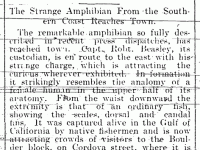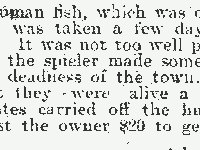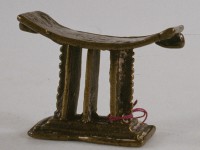Based on:
Ok, admittedly, this is quite the over-the-top Utopian rant but I figure Brown’s article gave me the perfect opportunity to go off the handle a bit and raise some ideas for (optional) discussion…
Here we go (this opinion is subject to change)…
Brown discusses the etymological conflation of the loaded words “property” and “heritage” within the context of the Museum that has morphed from an encyclopedic Enlightenment-era venture to being a “site of conflict” (145). In contemporary times, this conflict-site perpetually deals with the competing forces of “controversial provenance” (145). Consequently, Brown discusses how the authority is diluted when collecting intangible heritage as if it was property (145).
Brown also reminds us that proprietary culture is not unique to Westerners/Europeans as protecting sacred knowledge happens in all cultures. In Western culture for example, there was once a living tradition that dealt with the occult and we had even once shared oral traditions similar to that of indigenous people. Having said this, in our own regions of ancestry, we (i.e. the culture of the blog-author) were once indigenous people.
Brown is essentially asking what the role of proprietary culture/property/sacredness is in the age of public social media (146). Social media as it currently stands, extends its narrative meme-space beyond cultural community boundaries.
Brown suggests that in a Postcolonial-era, such stewardship should be left to the artefact creators their descendants…
If this is going to be the Museum collection-negotiation paradigm from now on, then I am guessing that it will not be until the advent of embodied virtualizion of our own bodies and minds (body-schemas) through technological means when Westernized museum bureaucracies will finally become sympathetic towards the Post-colonial discourse. I am claiming that we must merge with our surrounding artifacts in order to transcend them as commodity-fetishes. For example, when we eventually live-out our artifacts both as “property” and “heritage”, we become post-virtual beings (Bainbridge calls these “cy-clones”) – each totally unique yet entirely conservable and publically remediated/emulated/propagated – that can finally embrace ritual as “living art” – without the need to distinguish the two. At this point in history, we might understand that our interest in residual artefacts goes beyond a mere collection-fetish and see them as an integral part to our identity as individuals belonging to a completely networked community.
If this happens, we will jettison the revenue imperative to guide visitors to the gift-shop (158) and share our own artifact/mentefact stories with members of indigenous communities and work post-buraucratically together towards forging something more than a garage-sale of metaphysically charged ritual artifacts.
The post-museum could transcend beyond being an observation and regularatory space (148) and become a space of participation and embodied story-telling. Of course, my vision here is utopian…We must start somewhere if we are to get past this increasing cultural alienation with other cultures. Having said this, such a post-virtual, post-internet, post-commodity culture would be open to all communities and not limited to Westeners.
According to Brown’s testimony, our conventional museum paradigm seems to have caused spiritual harm to others and we should no longer contribute to this harm (152). It is foolish to harness the “Aura” (152) of others. We can better understand this aura by making our own from scratch and then we can better understand how to share it with others in an open a manner as Facebook or Second Life. Perhaps then we can finally be worthy of entering into dialogue with First Nations communities, for example.
Only if we continue to turn the living and “supernatural” aura into a residual artefact stored in a dusty basement will we still compel others to tell us “more and more about less and less” (159) of the artifact we ignorantly extracted from them. If we really wish to see ourselves as the arbiters of taste and feel genuinely enlightened, we really need to experience this type of “magical” phenomenon for ourselves so we can be in direct communion with this “aesthetic genius” (148) we so revere as a novelty obsessed culture inspired by second-hand fetishes.



 I just came home from an excellent workshop at the Smithsonian’s National Museum of Natural History called “
I just came home from an excellent workshop at the Smithsonian’s National Museum of Natural History called “
